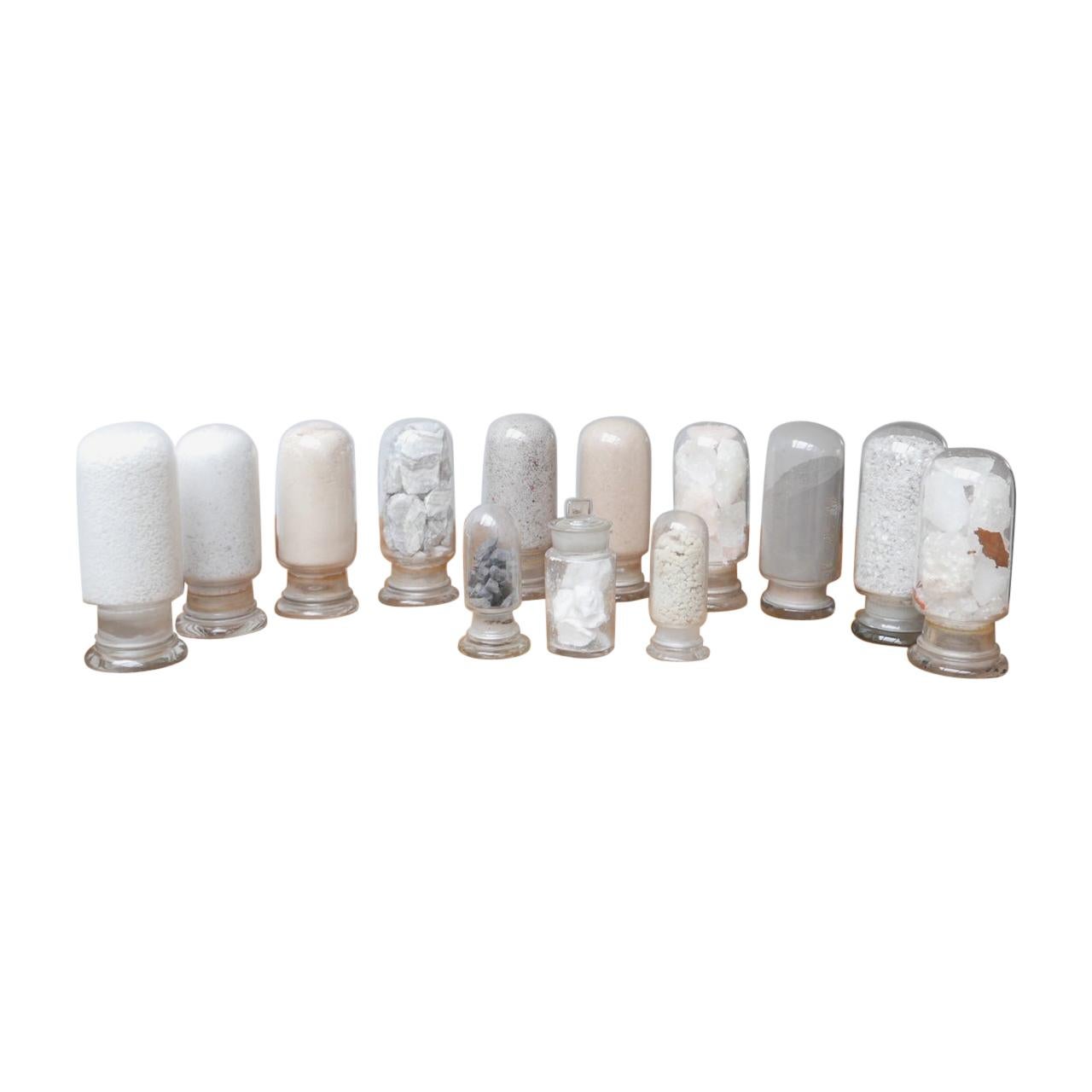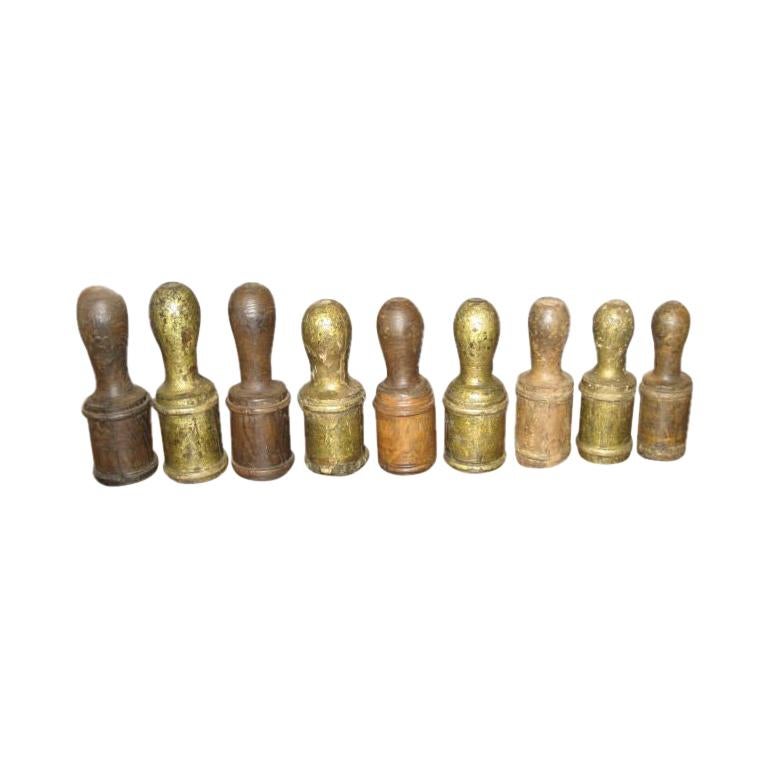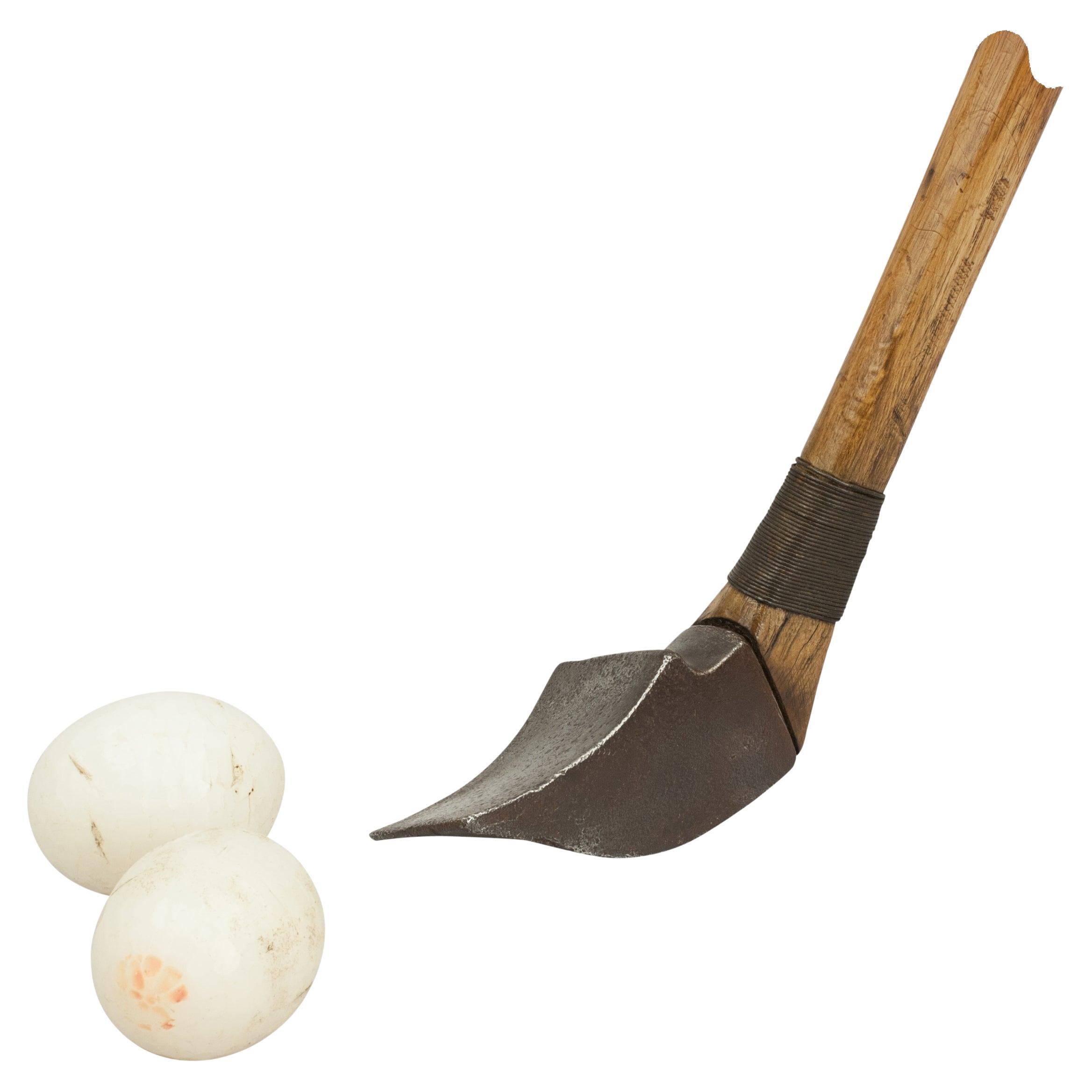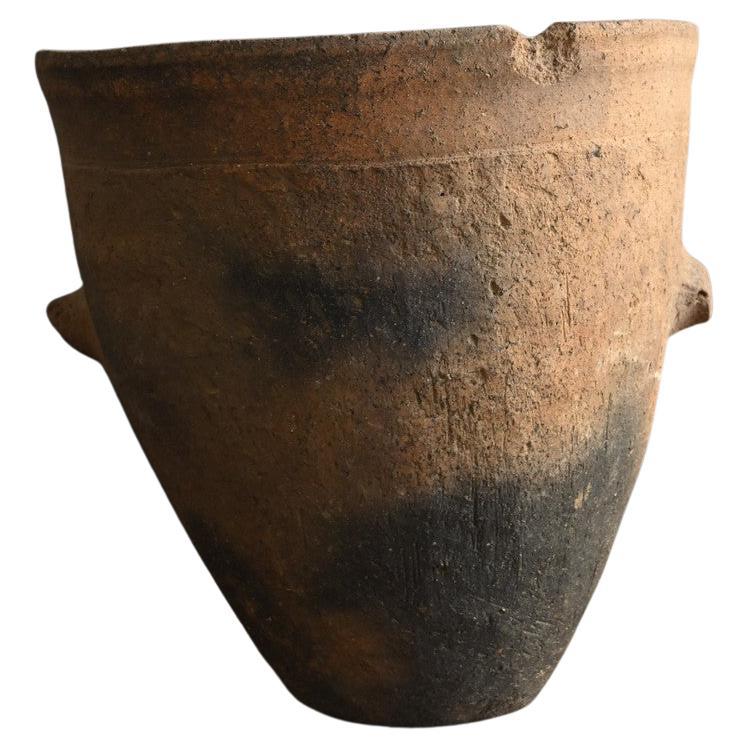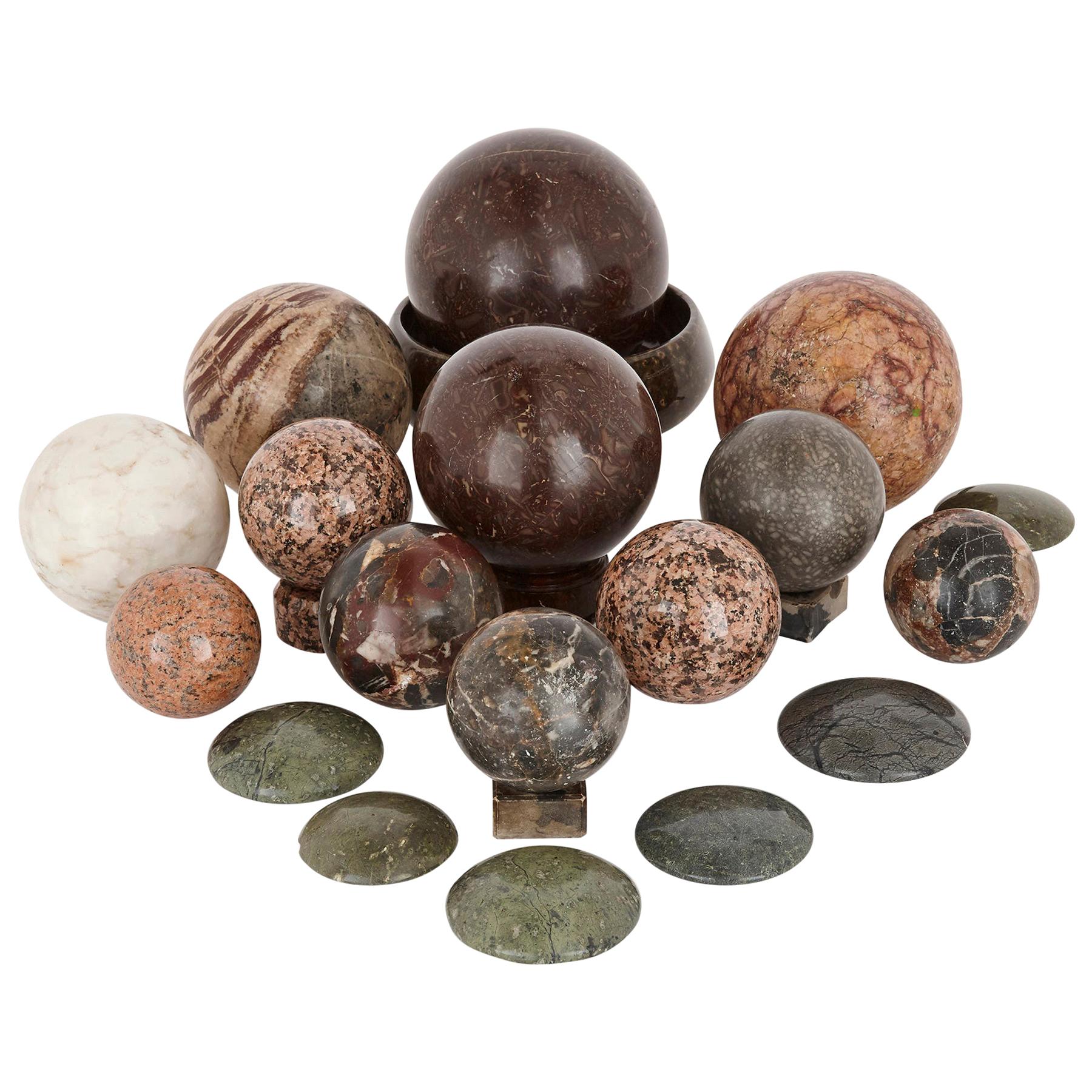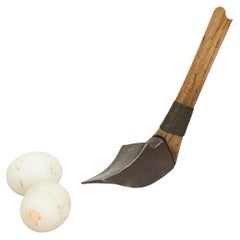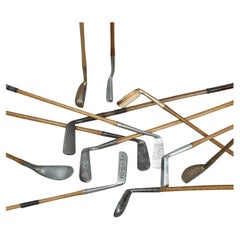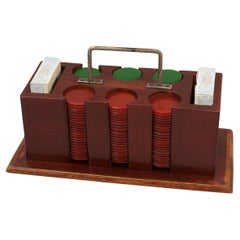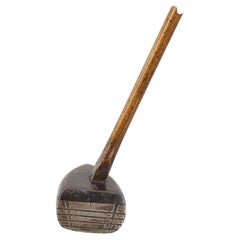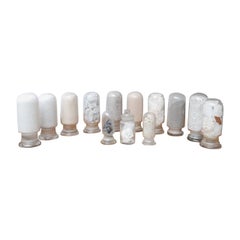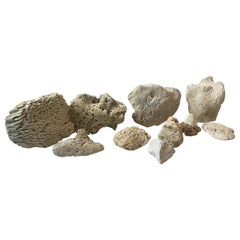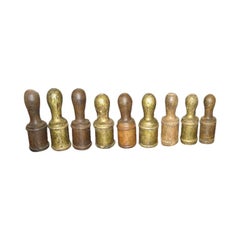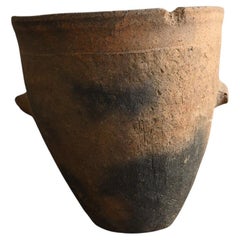Want more images or videos?
Request additional images or videos from the seller
1 of 8
Collection of Antique Colf Club Heads
$1,975.94
£1,450
€1,693.97
CA$2,714.01
A$3,034.59
CHF 1,591.77
MX$36,756.21
NOK 20,092.98
SEK 18,983.01
DKK 12,643.83
About the Item
Collection Of Antique Colf Club Heads.
A rare collection of 16th, 17th century lead Colf club heads from the Netherlands with various ceramic moulds and a reference book by Steven J. H. van Hengel titled "Early Golf". Although not associated with golf, it is thought that the origins of golf may have derived from Colf.
Colf, not to be confused with Kolf, was the ancient long game and at least looked very similar to golf, kolf was the relatively new short game, 18th century. Colf was a stick and ball game in which a ball was hit with a curbed stick, later a wooden shaft with a metal face, with the aim of reaching a target in the fewest possible strokes. Not very different from the games of crosse (choule) and mail (pall mall). The game came into being in the Low Countries around the end of the 13th century and the beginning of the 14th century. At the end of the 17th century and the beginning of the 18th century, for several reasons, the game ceased to exist. Colf was played in the streets and churchyards in the towns and later the roads, tracks and the open acres and fields in the ramparts outside the city walls, moving also to the frozen canals, rivers and lakes during the Little Ice Age (16th and 17th century). The game was played over longer distances. Because the game was played in winter, these 'playing fields' were often very muddy or hard frozen and so hardly passable.
At some time during the Middle Ages, the Colf craze seems to have travelled across the North Sea to the Netherlands' neighbouring trading partner, Scotland. While the Scots rightly claim to have invented the modern game of golf, the origins of the game that was to become golf were brought to Scotland by Scots merchants who had traded in the Low Countries. The game was brought to St Andrews from Hanseatic ports where Colf was commonly played at the time. The Dutch sport was adapted to local conditions whereby it came to be played on what were termed 'links' (coastal sandy grasslands). The term has since become almost synonymous with the modern golf course. Oddly, while Scotland was developing its own interpretation of Colf as a spacious outdoor game, which would eventually morph into the modern game of golf, the Dutch were doing exactly the opposite, instead of playing in the open, more and more were adapting the game to a form that could be played on the old maliespel courses, which mostly adjoined taverns and inns. Increasingly, the courses were roofed over until finally, the new game was entirely played indoors. Thus was born the unique Dutch game of Kolf.
Kolf was played using initially the old colf clubs and balls and played on a kind of mini-jeu de mail alley. Colf became Kolf, a shorter game, more target oriented than distance oriented. The ball was kept low, or even rolling, when pushing towards the target. The target itself changed from a tree, a door or a hole towards a wooden post in the ground. The posts were not the final target of the game. The ball was hit against the post and from there it ricocheted into small marked fields behind the post with different point values.
FROM COLF TO KOLF, The same word, a world of difference by Geert & Sara Nijs was used in the research of these club heads as was Wikipedia.
- Dimensions:Height: 1.97 in (5 cm)Width: 0.04 in (1 mm)Depth: 0.04 in (1 mm)
- Materials and Techniques:Lead
- Place of Origin:
- Period:17th Century
- Date of Manufacture:Circa 16th, 17th century
- Condition:Wear consistent with age and use.
- Seller Location:Oxfordshire, GB
- Reference Number:Seller: 289841stDibs: LU975739847592
About the Seller
5.0
Platinum Seller
Premium sellers with a 4.7+ rating and 24-hour response times
Established in 1977
1stDibs seller since 2013
789 sales on 1stDibs
Typical response time: 1 hour
Associations
LAPADA - The Association of Arts & Antiques Dealers
- ShippingRetrieving quote...Shipping from: Oxfordshire, United Kingdom
- Return Policy
Authenticity Guarantee
In the unlikely event there’s an issue with an item’s authenticity, contact us within 1 year for a full refund. DetailsMoney-Back Guarantee
If your item is not as described, is damaged in transit, or does not arrive, contact us within 7 days for a full refund. Details24-Hour Cancellation
You have a 24-hour grace period in which to reconsider your purchase, with no questions asked.Vetted Professional Sellers
Our world-class sellers must adhere to strict standards for service and quality, maintaining the integrity of our listings.Price-Match Guarantee
If you find that a seller listed the same item for a lower price elsewhere, we’ll match it.Trusted Global Delivery
Our best-in-class carrier network provides specialized shipping options worldwide, including custom delivery.More From This Seller
View AllAntique Chole Club & Ball. Golf Related.
Located in Oxfordshire, GB
Vintage Crosse, Chole, Choule, Crossage, Jeu De Crosse Club.
The crosse club consists of a cast iron head, the wooden shaft with very unusual octagonal shape, and a unusual grip. The...
Category
Antique Late 19th Century Belgian Sports Equipment and Memorabilia
Materials
Metal
Collection Of Twelve Hickory Putters
Located in Oxfordshire, GB
Selection Of Vintage Hickory Golf Clubs, Putters.
A wonderful selection of various hickory shafted putters. This is a great collection on its own or could even be the makings of an e...
Category
Early 20th Century British Sports Equipment and Memorabilia
Materials
Steel
Roulette, Gaming Counters, Poker Chips and Cards
Located in Oxfordshire, GB
Vintage Gaming Chips, Cards and Container.
A nice set of gambling counters (poker, gambling, gaming chips) and two decks of cards in a rectangular beech-wood keeper with chrome centr...
Category
Vintage 1950s British Games
Materials
Wood
Brewster's Center-shafted Simplex Golf Club, Lofter
Located in Oxfordshire, GB
Antique Simplex Golf Club, Lofter Or Spoon.
An original late 19th century Simplex model golf club with an approximate 25 degree loft. The head is made of hard wood and is stamped '17...
Category
Antique Late 19th Century British Sports Equipment and Memorabilia
Materials
Wood
Unused Leather Football.
Located in Oxfordshire, GB
Vintage Unused Leather Football.
A traditional hand sewn 12-panel tan leather football in original paper wrapping. The unused ball has a lace-up slit to the top to enable bladder inf...
Category
20th Century British Sports Equipment and Memorabilia
Materials
Leather
Set Of Gaming Or Poker Chips
Located in Oxfordshire, GB
Vintage Gaming Chips, Cards and Container.
A nice set of gambling counters (poker, gambling, gaming chips) in a rectangular beech-wood keeper with brass central carry handle and a li...
Category
20th Century British Games
Materials
Beech
You May Also Like
Antique Mineral Specimen Collection
Located in London, GB
A rare set of antique mineral specimen jars.
Some remnants of labels.
Some solid rocks others are powders.
Sourced in Holland.
Dimensions:...
Category
Early 20th Century Dutch Scientific Instruments
Materials
Glass
Vintage Candlabra Remnants
Located in Napa, CA
Vintage wooden candlabra remnants from Italy dating back to the 1770's. Remnants are carved from wood and covered in a gold gilt and paint.(Each sold separately)
Small: $250
Mediu...
Category
Antique 18th Century and Earlier Italian Decorative Objects
Materials
Wood, Paint
$350 / item
Japanese antique earthenware/Wabi-sabi objects/Unglazed pottery
Located in Sammu-shi, Chiba
I would like to introduce some earthenware with a very interesting shape.
This is an old excavated earthenware from Japan, called "Yayoi" or "Hajiki".
This item is from before the 9...
Category
Antique 15th Century and Earlier Japanese Other Antiquities
Materials
Pottery
Set of 24 Specimen Stones of Various Types and Shapes
Located in London, GB
This set contains 24 marble specimens, the specimens including serpentine, granite, and Poltesco marble from Cornwall. The specimens take various shapes, including perfectly formed b...
Category
Antique 19th Century English Natural Specimens
Materials
Granite, Marble, Serpentine
French 20th Century Collection of 12 Boules
Located in Baton Rouge, LA
A collection of 12 brass & iron boules from France, circa 1880. Boule has been a popular game played in France since the Middle Ages and continues to be a family friendly game all ov...
Category
Antique 19th Century French Other Games
Materials
Metal, Brass, Iron
$975 / item
More Ways To Browse
Used Country Club Furniture
Golf Antiques
Ceramic Wall Head
Ceramic Face Head
Stick Ball
17th Century Scottish Furniture
17th Century Scottish
Stick And Ball Furniture
Pall Mall
17th Century Dutch Door
Antique Alley
St Andrews Golf Club
Old Course St Andrews
Antique Furniture Fife
Antique Riding Boots
Hardy Rods
Olympic Memorabilia
Antique Bar Memorabilia
